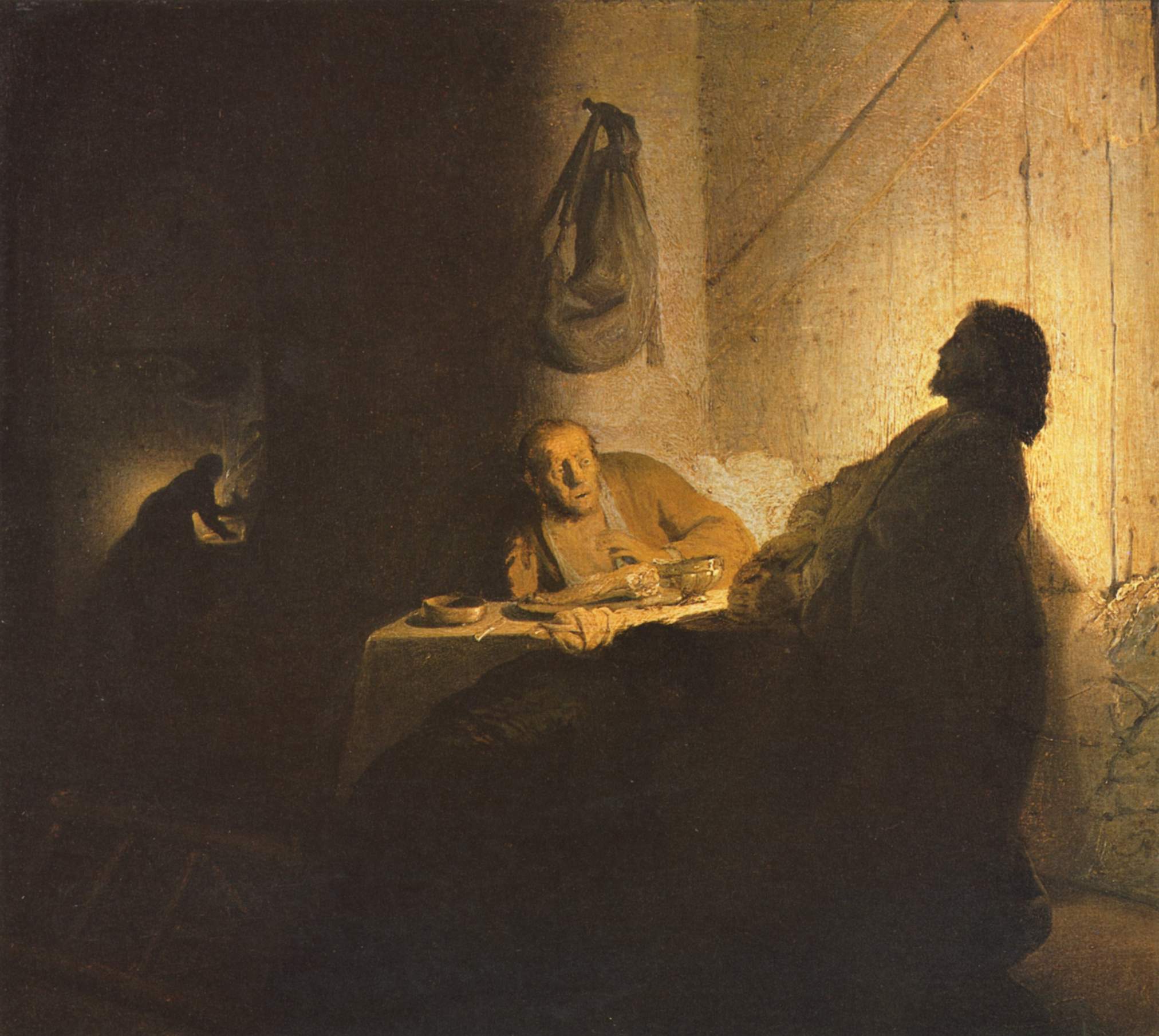Each year around Easter, our class discusses the state of Jesus's mind and body between the Resurrection and the Ascension. After having escorted the Old Testament saints from the waiting room of Sheol into Heaven, and in possession of his resurrected Easter body, Jesus just doesn't have much to do on Earth anymore. He says a few (important) things, flits in and out of dimensional reality, exhibits a langorousness that surely was not in evidence during his 3-year ministry. He's no longer at home in the sinful world. He may appear in it occasionally, but he belongs in heaven.
I like Rembrandt, especially his later work, which becomes more and more concerned with the message than the medium. For example, look at these two portrayals of the 'Supper at Emmaus.'
This one dates from 1628:
In 1628 Rembrandt was a 22-year-old hot hand, as we'd say in architecture school. Look at that dramatic rendering of the moment in Matthew's Gospel: "When he was at table with them, he took the bread and blessed, and broke it, and gave it to them. And their eyes were opened and they recognized him; and he vanished out of their sight." (Mt 24:30-31) The light; the darkness; the astonishment! It's very literal, and is a terrific illustration of the moment, perfect for engaging the kids, right?
Well...no. I wouldn't use that 1628 painting in class.
I'd use this one:
Here Rembrandt shows the benefits of twenty more years of reflection. I can use this portrait to deepen the kids' understanding as well.
First, the apostle's recognition of Jesus happens in the company of people who don't recognize him at all. This isn't so different from any number of people (thousands, I suppose) who saw and heard Jesus; and lacking faith, paid him no particular mind. This lack of recognition ties in well with a quick recap of one of Isaiah's Christmas prophecies: "The ox knows its owner, and the ass its master's manger; but Israel does not know, my people does not understand." (Is 1:3)
Next, the recognition focuses more on spiritual recognition than physical. The apostle's bodily reaction is so muted that the others don't notice; but his face reveals his gradual realization that this is Jesus.
And this Jesus, what a gift. This Jesus is barely there, on the verge of vanishing, already disengaged from the fallen world. A heavenly Jesus who didn't want to be touched by Mary Magdalene on Easter morning. One whose attention is quite reasonably elsewhere, counting the minutes until he at last ascends to the Father.
This is the image to teach from.



2 comments:
Actually, if I had the time, I would use both if for no other reason than to illustrate the journey a soul takes discovering Christ. IOW, today's lesson is one to be savored and considered over many years.
Good idea which I will remember.
Post a Comment